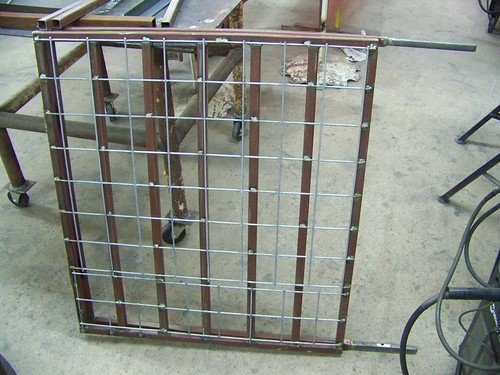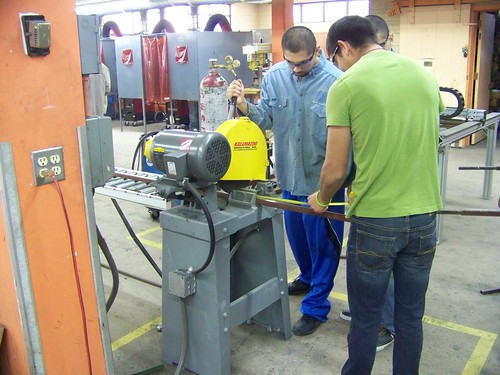
USDA Wildlife Services (WS) employees in New Mexico have been fabricating the traps and tools for their jobs for many years. As feral swine management work began in the state, naturally we began to build our own traps and gates to contain this invasive and damaging mammal.
In 2012, several Federal, state, Tribal and private agencies recognized the problems they posed and developed a cooperative, proactive approach to eliminate or control feral swine. Recognizing existing WS personnel could not quickly build enough traps and gates for the expanded range of the Feral Hog Eradication program and knowing that local partnerships was one key to the pilot, Lea County Wildlife Specialist Richard Luce and I approached welding instructors at three local high schools who all agreed to have their classes help construct needed gates and traps.
WS provided materials and under the enthusiastic guidance of Ag teacher Brian Mitchell, the Goddard High School welding students in Roswell gained hands-on experience in fabricating rooter gates for corral traps. At Tatum High School, Ag Education instructors Mike O’Connor and Mark Daugherty are working with students to build gate/trigger assemblies for six-foot wide saloon-style gates for corral traps in SE New Mexico.

Lovington High School Vocational Ag teacher Scott Bryant gladly accepted the opportunity for students to gain valuable experience in producing a finished product from raw materials. “A lot of these students cannot afford to buy material to build a project of their own. Projects like these help them get valuable experience in the layout and completion of a project and also taught them to work together as a team.”
His 24 students were able to start a project from the beginning: setting up separate student groups to cut, layout and weld the material to complete gates complete with trigger assemblies. So far they have built 12 gates, with six-foot wide openings that are more effective for trap-wary hogs.
Additional material has been delivered to the Lea County schools where students will continue to assist WS and the people of New Mexico by building more gates. All three high schools have been a great asset in the feral swine control effort.
Partnership assistance is also coming in the form of funds, materials, labor, and logistical support from other agencies and organizations including New Mexico Departments of Game and Fish, State Land office, Agriculture, and Health, the Mescalero Apache Indian Reservation, Bureau of Land Management, US Forest Service, NM Livestock Board, NM Cooperative Extension, Bureau of Reclamation, and Cattle Growers and Wool Growers.
Being part of this truly collaborative effort to help manage this serious threat to agriculture, water and natural resources has been extremely gratifying.

